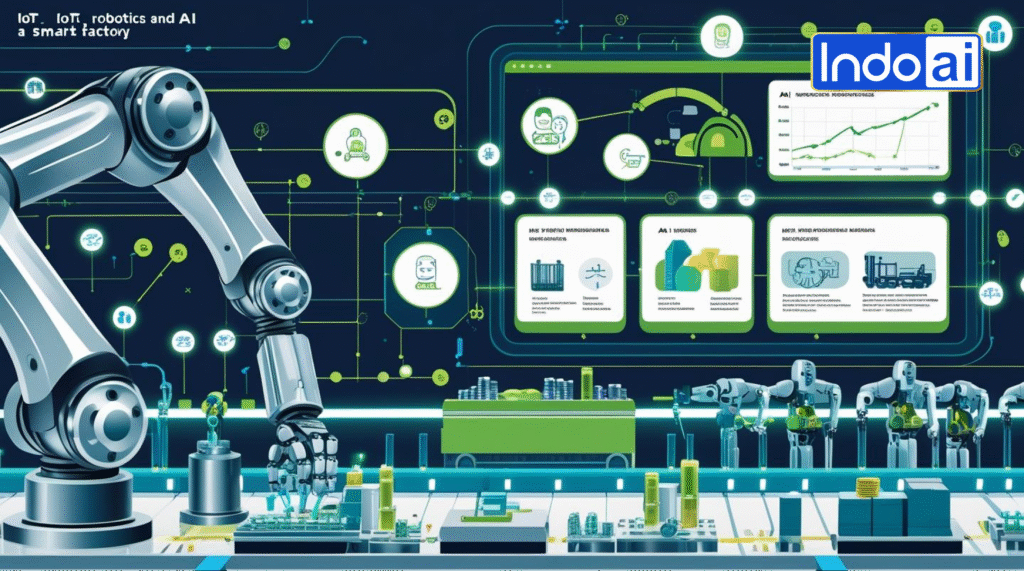The world we live in is constantly evolving, and technology is at the forefront of this transformation. One of the most significant technological advancements of recent times is the Internet of Things (IoT). IoT is the interconnectivity of everyday objects through the internet, enabling them to send and receive data. However, IoT is not an isolated technology; it is closely linked to other technologies such as robotics and artificial intelligence (AI). In this article, we will explore the connection between IoT, robotics, and AI.

IoT And Robotics
Robots are no longer science fiction but a reality, and they are becoming increasingly prevalent in our daily lives.
From manufacturing to healthcare, robots are transforming industries and providing new solutions to old problems.
One example of IoT and robotics in action is in the automotive industry. Many car manufacturers use robots to assemble vehicles, and they are connected through IoT to a central system that monitors their performance.
By using IoT, manufacturers can identify and fix problems quickly, resulting in fewer delays and improved productivity.
Another example of IoT and robotics is in the healthcare industry. Medical robots are used in surgeries, and they are connected through IoT to various devices that monitor patients’ vital signs.
This data can be used to adjust the robot’s actions to ensure the best possible outcome for the patient.
IoT And Artificial Intelligence
Artificial intelligence is another technology that is closely linked to IoT.
AI refers to robots’ ability to learn and make judgments based on data without human involvement.
IoT provides a wealth of data that can be used to train AI algorithms, making them smarter and more efficient.
One example of IoT and AI in action is in the development of smart homes. Smart homes use IoT devices such as thermostats, lighting, and security systems to collect data on a homeowner’s preferences and habits.
AI algorithms can use this data to learn when to adjust the temperature, turn on lights, and lock doors automatically.
Another example of IoT and AI is in the development of self-driving cars. Self-driving cars use a combination of sensors, cameras, and IoT devices to navigate roads and make decisions.
AI algorithms use the data collected from these devices to learn and improve their driving skills.
IoT, Robotics, And Artificial Intelligence: Industry 4.0
Industry 4.0 is the current trend in manufacturing that is driven by IoT, robotics, and AI.
Industry 4.0 seeks to create smart factories that are highly automated and connected through IoT.
By using robotics and AI, manufacturers can improve productivity, reduce costs, and create new business models.
One example of Industry 4.0 in action is in the aerospace industry. Aerospace manufacturers use robots to assemble aircraft components, and they are connected through IoT to a central system that monitors their performance. This data may be analyzed by AI systems to discover areas for improvement and optimize industrial operations.
Another example of Industry 4.0 is in the food industry. Food manufacturers use IoT devices to monitor food safety and quality.
By using AI algorithms, they can analyze this data to identify potential issues before they become problems, ensuring the safety and quality of the food.
Conclusion
IoT, robotics, and AI are three technologies that are closely linked and work together to create new solutions to old problems. By using IoT to collect data and provide real-time feedback, robots and AI algorithms can make better decisions, work more efficiently, and improve productivity. As these technologies continue to develop, we can expect to see more innovations in various industries, including healthcare, transportation, and manufacturing.
It is also essential to note that as these technologies advance, there are concerns about their impact on society, including job displacement and data privacy. However, with careful consideration and planning, we can leverage the benefits of these technologies while addressing these concerns.